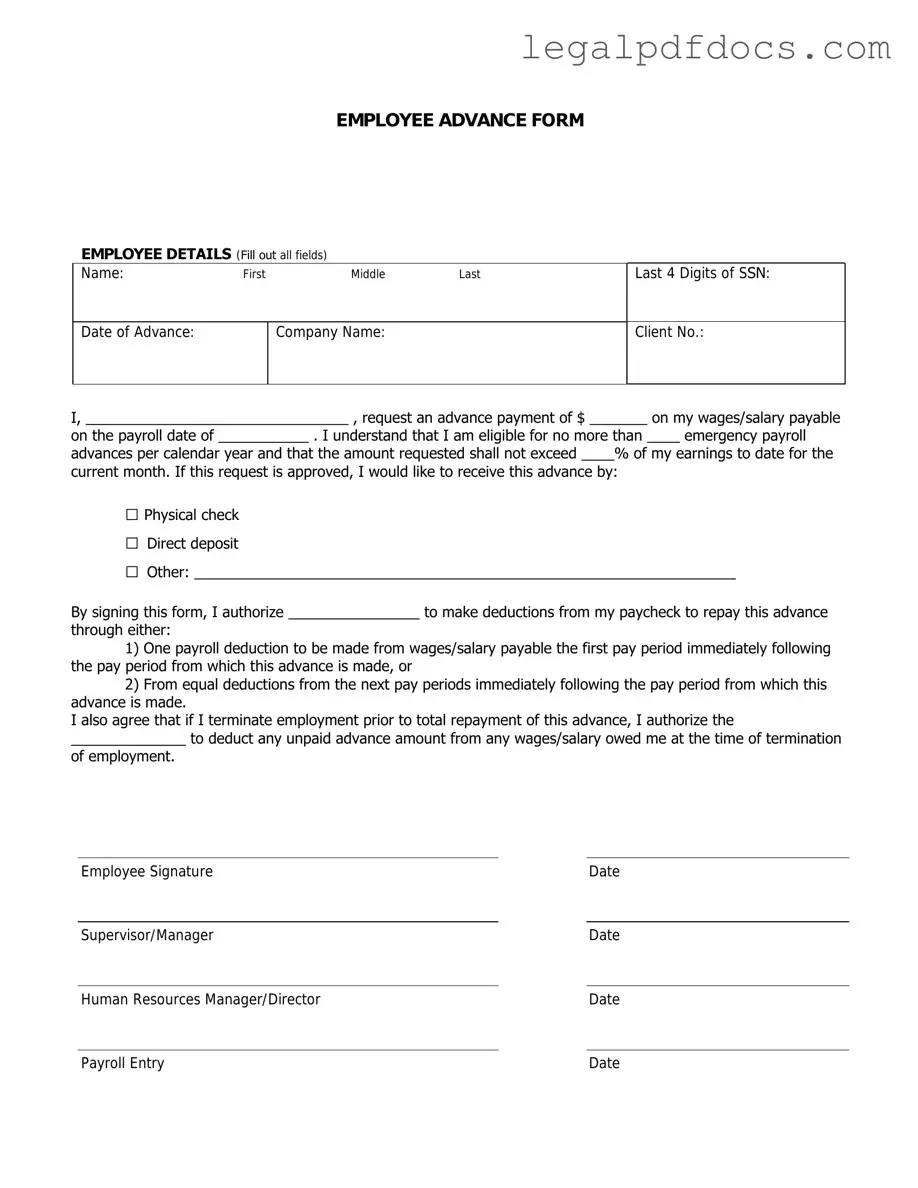The Employee Advance form plays a crucial role in facilitating financial assistance for employees who may need immediate funds for various work-related expenses. This form serves as a formal request for an advance on salary or reimbursement for costs incurred while performing job duties. Employees can use it to cover expenses such as travel, training, or other necessary purchases that support their work. The form typically requires details such as the employee's name, department, the amount requested, and a brief description of the intended use of the funds. Additionally, it often includes a section for managerial approval, ensuring that the request is reviewed and sanctioned by a supervisor. Properly filling out this form not only streamlines the process of obtaining an advance but also helps maintain transparency and accountability within the organization. Understanding the key components and procedures related to the Employee Advance form can empower employees to navigate financial requests effectively, ensuring they have the resources they need to perform their jobs efficiently.
